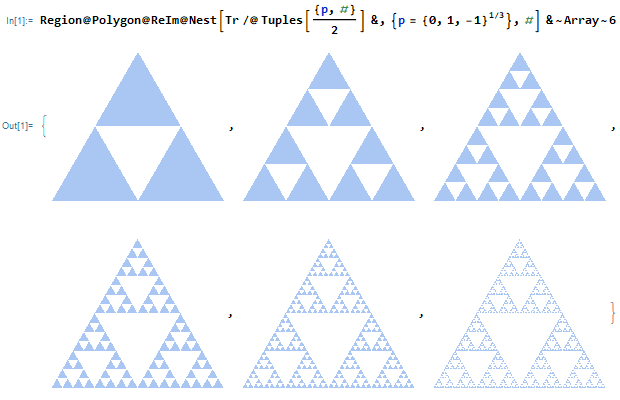C 127 119 116 108 65
This one uses the trick of the HTML answer of ^ i & j getting it to print pretty output would take 1 more char (you can get really ugly output by sacrificing the a^).
a=32,j;main(i){for(;++i<a;)putchar(a^i&j);++j<a&&main(puts(""));}
To make it pretty turn (32^i&j) to (32|!(i&j)) and turn it from ++i<a to ++i<=a. However wasting chars on looks seems ungolfish to me.
Ugly output:
! ! ! ! ! ! ! ! ! ! ! ! ! ! !
"" "" "" "" "" "" "" ""
"# !"# !"# !"# !"# !"# !"# !"#
$$$$ $$$$ $$$$ $$$$
!$%$% ! !$%$% ! !$%$% ! !$%$%
""$$&& ""$$&& ""$$&& ""$$&&
"#$%&' !"#$%&' !"#$%&' !"#$%&'
(((((((( ((((((((
! ! !()()()() ! ! ! !()()()()
"" ""((**((** "" ""((**((**
"# !"#()*+()*+ !"# !"#()*+()*+
$$$$((((,,,, $$$$((((,,,,
!$%$%()(),-,- ! !$%$%()(),-,-
""$$&&((**,,.. ""$$&&((**,,..
"#$%&'()*+,-./ !"#$%&'()*+,-./
0000000000000000
! ! ! ! ! ! !0101010101010101
"" "" "" ""0022002200220022
"# !"# !"# !"#0123012301230123
$$$$ $$$$0000444400004444
!$%$% ! !$%$%0101454501014545
""$$&& ""$$&&0022446600224466
"#$%&' !"#$%&'0123456701234567
((((((((0000000088888888
! ! !()()()()0101010189898989
"" ""((**((**0022002288::88::
"# !"#()*+()*+0123012389:;89:;
$$$$((((,,,,000044448888<<<<
!$%$%()(),-,-010145458989<=<=
""$$&&((**,,..0022446688::<<>>
"#$%&'()*+,-./0123456789:;<=>?
I actually kind of like how it looks. But if you insist on it being pretty you can dock four chars. Pretty Output:
!!!!!!!!!!!!!!!!!!!!!!!!!!!!!!!
! ! ! ! ! ! ! ! ! ! ! ! ! ! ! !
!! !! !! !! !! !! !! !
! ! ! ! ! ! ! !
!! !!!! !!!! !!!! !
! ! ! ! ! ! ! !
!! !! !! !
! ! ! !
!!!!!! !!!!!!!! !
! ! ! ! ! ! ! !
!! !! !! !
! ! ! !
!! !!!! !
! ! ! !
!! !
! !
!!!!!!!!!!!!!! !
! ! ! ! ! ! ! !
!! !! !! !
! ! ! !
!! !!!! !
! ! ! !
!! !
! !
!!!!!! !
! ! ! !
!! !
! !
!! !
! !
!
!
Leaving up the older 108 char, cellular automata version.
j,d[99][99];main(i){d[0][31]=3;for(;i<64;)d[j+1][i]=putchar(32|d[j][i+2]^d[j][i++]);++j<32&&main(puts(""));}
So I don't think I'm going to get it much shorter than this so I'll explain the code. I'll leave this explanation up, as some of the tricks could be useful.
j,d[99][99]; // these init as 0
main(i){ //starts at 1 (argc)
d[0][48]=3; //seed the automata (3 gives us # instead of !)
for(;i<98;) // print a row
d[j+1][i]=putchar(32|d[j][i+2]]^d[j][i++]);
//relies on undefined behavoir. Works on ubuntu with gcc ix864
//does the automata rule. 32 + (bitwise or can serve as + if you know
//that (a|b)==(a^b)), putchar returns the char it prints
++j<32&&main(puts(""));
// repeat 32 times
// puts("") prints a newline and returns 1, which is nice
}
Some output
# #
# #
# # # #
# #
# # # #
# # # #
# # # # # # # #
# #
# # # #
# # # #
# # # # # # # #
# # # #
# # # # # # # #
# # # # # # # #
# # # # # # # # # # # # # # # #
# #
# # # #
# # # #
# # # # # # # #
# # # #
# # # # # # # #
# # # # # # # #
# # # # # # # # # # # # # # # #
# # # #
# # # # # # # #
# # # # # # # #
# # # # # # # # # # # # # # # #
# # # # # # # #
# # # # # # # # # # # # # # # #
# # # # # # # # # # # # # # # #
# # # # # # # # # # # # # # # # # # # # # # # # # # # # # # #



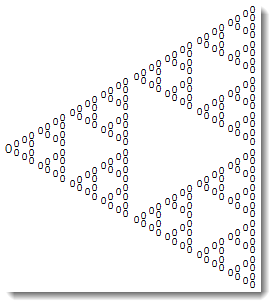
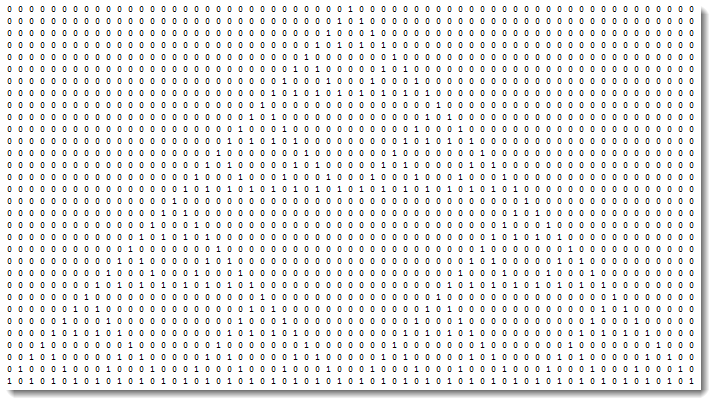


 :D
:D


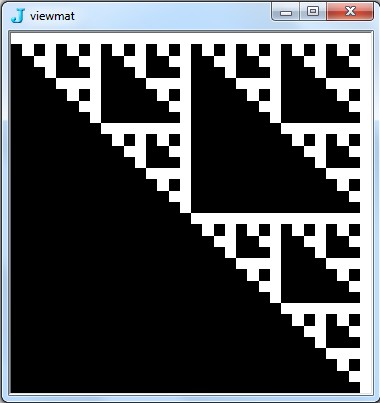
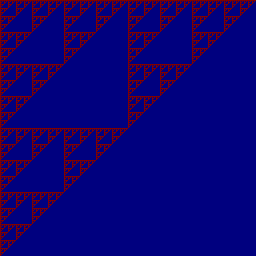


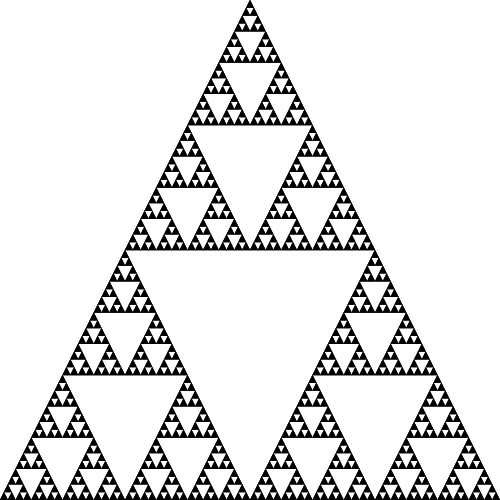
![Image@Array[BitAnd,{2,2}^9,0]](https://i.sstatic.net/7IR6g.jpg)
![Image3D[1-Array[BitXor,{2,2,2}^7,0]]](https://i.sstatic.net/TUzsq.jpg)


